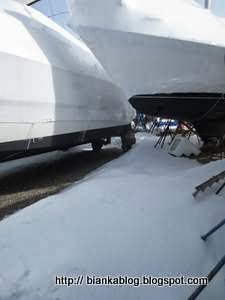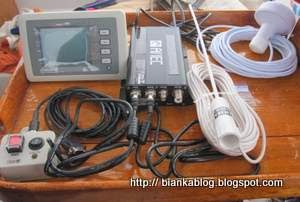I do most of my sailing solo on board BIANKA. Not that I don't mind having other people on board. It's just that my boat is so easy to sail that most of the time the crew is sitting around drinking my beer and gobbling down snacks. Then you have to have to also extra provisions, water etc... to feed them and that adds up. I can usually balance my rudder under good conditions and don't need really to use to use the autohelm on most cruises. Though I have been thinking of building a home brew wind vane steering system for the boat too. Recently I came upon an article where some scientist have come up with an artificial muscle. Much stronger than human muscles and to make things even more interesting it was made from simple everyday materials. The researches started thinking they would use some esoteric nano tube technology but, discovered that some common yarn and fishing line actually works quite well:
"To create the artificial muscles, the researchers twisted the fishing line to create a muscle that turns like a rotor and can spin. That creates a torsional, or twisting, muscle that can spin a rotor to more than 10,000 revolutions per minute, notes UT Dallas.
Extra twisting, to the point where the fishing line looks like a “heavily twisted rubber band,” creates a type of muscle with greater contraction than a human muscle. Twisting the fishing line the opposite way creates an artificial muscle that expands.
According to Ray Baughman, director of the NanoTech Institute, twisting a few strands of fishing line can create a muscle that lifts 16 pounds while bundles that are designed like a muscle, containing 100 of these small fishing line muscles, can lift up to 1,600 pounds." -IBT
Just by using a little heat via a wire woven into the yarn fishing line cloth makes the artificial muscle expand and contract as show in the video:
Here is another video showing the simplicity of making the basic building block of the artificial muscle using the fishing line:
It got me thinking using some of this artificial muscle would come in handy on board for operating winches or moving the rudder as part of a wind vane steering system. Maybe also as part of an active anchor snubber system or self adjusting dock lines. Various pumps from bilge to head might also be areas where these could be placed into use. The fact that it uses common everyday materials such as yarn and fishing line makes it even more appealing. Something to keep ones eye on.





























.jpg)


